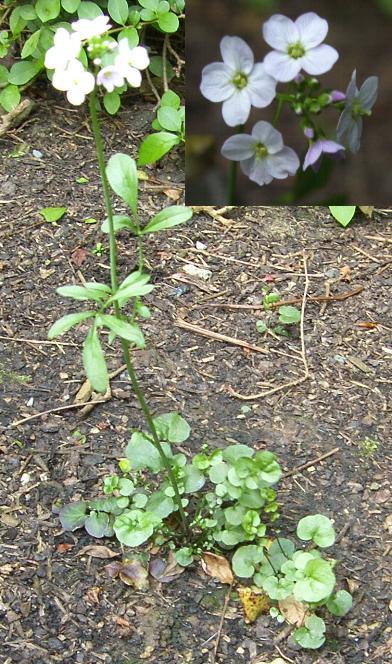CuckooflowerScientific Name : Cardamine pratense |
Lady's Smock or Cuckooflower is a perennial which looks like a larger specimen of Hairy or Wavey Bittercresses. The basal rosettes of leaves are very similar in shape, but the flowers of Lady's Smock are much larger. It was given the name Lady's-smock because these flowers resembled the smocks worn by milkmaids. It was also believed that to pick them and take them into the house would attract a lightning strike or would be unlucky as they were sacred to the fairies. The other common name arises from the fact that flowering occurs at the same time as the Cuckoo arrives in spring.
It is the foodplant of the Orange Tip Butterfly larva.
The basal leaves are divided into roundish leaflets varying in number from 3 to 15 with a terminal relatively larger one. They have been used as a substitute for Watercress. The leaves on the flower stems also bear leaflets, but these are more pinnate in shape.
The flowering tops are claimed to have anti-spasmodic properties used in the treatment of epilepsy, hysteria and St Vitus' dance. The plant is full of Vitamin C and minerals, so is helpful in cases of anaemia, or during convalescense
The plant is easily uprooted and provided the growing point is removed the roots should not regrow.
The basal rosette can be mistaken as one of the bittercresses, but the leaves tend to be darker green and have a slightly glossy appearance. Also the leaflets are more rounded.
Follow these links for further details on Weeds, Weed Removal and Weed Prevention.
